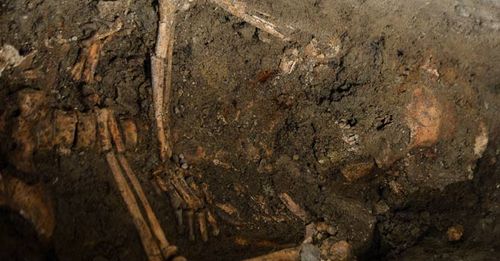AFP:
FLORENCE: Archaeologists on Tuesday unearthed a skeleton in a rare state of preservation in Florence in what they believe may be a crucial step towards unravelling the mystery of the identity of the woman with the most enigmatic smile in the world.
Several bodies have been discovered in the hunt to find the mortal remains of Lisa Gherardini, the Florentine noblewoman widely believed to have served as the muse for Leonardo da Vinci’s “Mona Lisa”.
Silvano Vinceti, who heads up the team of Italian archaeologists, said this latest discovery in an abandoned convent was particularly exciting — though tests would still have to be carried out to ascertain the identity of the remains.
“I’d say that we’ve got to the really exciting part for researchers,” said Vinceti, who specialise in resolving art mysteries.
“The culmination of all our work where we’re getting close to answering the key question, ‘will we or will we not find Lisa Gherardini’s remains?’.”
”Today we opened another tomb, with a complete skeleton which is very important because in the first phase of the research we did not find human remains, they had been moved to another location,” he said.
The team began digging up the convent’s new cement floor last year, after fresh documents confirmed that Gherardini, the wife of rich Florentine silk merchant Francesco del Giocondo, had lived in the convent after her husband died and was looked after by her two daughters who were nuns. She was eventually interred there.
Del Giocondo is thought to have commissioned the portrait from the Renaissance artist, and though there is little proof, most art historians agree that Lisa Gherardini served as the primary model for the bewitching painting.
It was composed between 1503 and 1506 and now hangs in the Louvre museum in Paris. Although the researchers had previously discovered bits of bones and two sets of remains in the convent, the latest skeleton to be unearthed is the best preserved, crucially, with the skull intact.
It also lies close to the tiny nunnery’s Franciscan altar, thereby placing the grave in the right historic period. But as with the previous remains, this skeleton may also prove to be unrelated. In that case, new digs will begin in September, to unearth other bodies the researchers believe lie on the other side of the alter, in a larger grave.
The next step for now is to send the latest remains off for a series of tests to confirm they belong to Gherardini. The team then hopes to reconstruct her face and compare it with the facial features in the painting.
“Carbon-14 dating allows us to date the period, and we have to find out whether the remains date to the middle of the 16th century.


